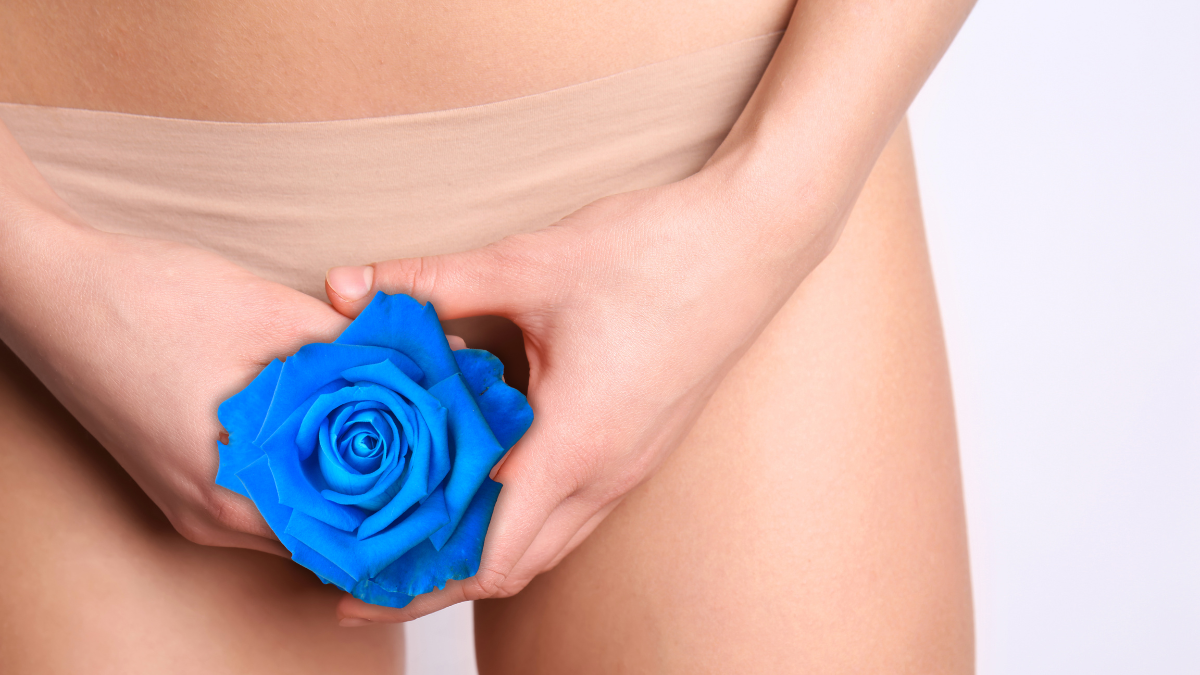How well do you know your body? Can you correctly identify your labia, vulva, clitoris and vagina? Are you sure you know the form and function of each of these?
While a lot of us may not be as intimate with our intimates as we should be, we should all do our best to learn on the go. Some terms and conditions might be familiar due to prevalence, popularity and seriousness. But more often than not, issues with women’s genitalia or sexuality are overlooked.
So, let’s talk about the Blue Vulva Syndrome!
What Is Blue Vulva Syndrome?
Your clitoris might not actually turn blue, but if excess blood remains in it for long periods of time, without a release, it can tend to be uncomfortable. ‘Blue vulva’ is just slang for this aching feeling.
Although everybody is aware of what blue balls are, nobody really knows what the blue vulva syndrome is, and that’s because not a lot of research has been done on this topic! Which obviously is a cause of next to no awareness about it.
Why Does Blue Vulva Occur?
If you know about blue balls, and are wondering about blue vulva causes, don’t stress too much, it’s the same. When vulvas are aroused, the arteries in them expand to supply more blood and oxygen to the labia, vagina, and the clitoris. But, the veins that carry the blood away get thinner, so all the extra blood remains there too! This vasoconstriction is what helps penises to remain erect and testicles to expand and in women, it occurs in the vulva, uterus and ovaries. This excess blood is the reason for swelling and lubrication.
When both sexes reach an orgasm, all the extra blood exits from the genitals, and then they go back to their own sizes. But, on the other hand, if there isn’t an orgasm, the engorged genitals remain the same and vulva owners feel uncomfortable because of the larger size and extra weight.
7 Facts About Blue Vulva You Should Know
1. An Unexplored Phenomenon
Unlike blue balls, blue vulva has received limited attention in research, and so a lack of studies is a major reason for unawareness on this topic.
2. Swelling And Blood Flow
Blue vulva occurs when there is a rush of blood into the vulva, which causes swelling. This phenomenon happens because of an increased level of blood circulation in that area.
3. Colour Change
Although in blue balls the testicles do develop a bluish tint due to the accumulation of blood, in blue vulva syndrome, there isn’t any real colour change.
4. Slang
This syndrome is also called pink pelvis, blue uterus, or blue bean as slang.
5. Mild Symptoms
The symptoms of this condition are mild, which include swelling and discomfort. These are harmless, and people should not be worried.
6. Easy And Fast Relief
Just like blue balls don’t last for long, your blue labia too resolves within a few hours, and the swelling subsides.
7. Sex Education

Most people don’t know that something like blue vulva pain exists, because of a lack of sex education.
5 Blue Vulva Symptoms
Here are a few symptoms of blue vulva:
- Mild discomfort and pain
- Slight aching
- Slight heaviness
- Sensations of arousal (with no climax)
How To Treat A Blue Vulva?
Whether you’re treating epididymal hypertension (blue balls) or the symptoms of blue vulva, the steps are quite similar. This is not really a serious condition that needs a doctor’s attention. You can just relieve your symptoms at home easily! Here are a few ways for blue vulva treatment:
1. Having An Orgasm
The best way to ease the discomfort of blue vulva is by reaching an orgasm. You’ll release the blood from your genitals and get relief from the aching and heavy sensations. Don’t stress if you don’t have a partner, just masturbate!
2. Distracting Yourself
Any other activity that distracts you from your sexual frustration will help you feel better. The aim is to stop being turned on so that your genitals go back to their normal state and the symptoms stop.
3. Taking A Cold Shower
For blue vulva relief, take a nice cold shower to divert the flow of blood from your vulva, and control your arousal.
4. Applying A Cold Compress
Just like how a cold compress heals injuries, it’ll also help reduce the swelling down there.
5. Doing A Physical Activity
Experts recommend doing vigorous activities and exercises like strength training to get rid of sexual arousal. The idea is that physical activities can redirect your blood flow to the major muscle groups instead of your sexual organs.
Is Blue Vulva Serious?
The blue vulva syndrome should not be taken seriously – it’s nothing! An innocuous condition that can go away on its own, it doesn’t require any proper treatment. Visit a gynac if you have other issues like pain in your genitals or pain during sex.
Although the blue vulva syndrome is not widely recognized, it’s quite a normal physiological response. With open conversations, accurate information, and self-awareness, we can help bring this into the limelight. Remember, if your discomfort persists, consult a doctor.
Open up like never before and participate in conversations about beauty, entrepreneurship, mental health, menstrual & sexual health, and more. Desi women, join our community NOW!

